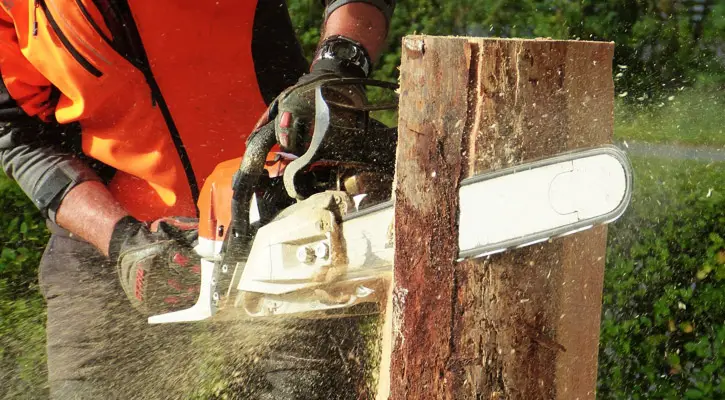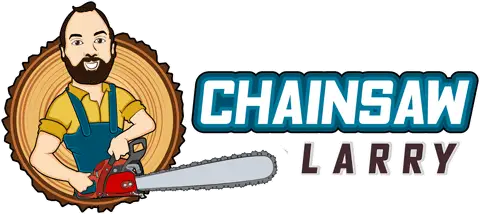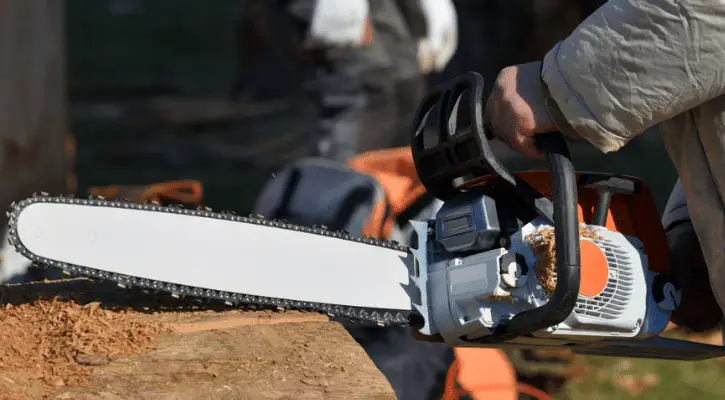Table of Contents
If you’re reading this article, chances are you spend a reasonable amount of time with your chainsaw. However, your chainsaw bar isn’t just for sawing; it’s also designed to help you maintain the safety of your chainsaw and make it last longer.
And as you may have guessed by now, maintaining your chainsaw bar is essential to keeping it in good shape. You protect your hands and equipment when you take care of your bar. It’s better to do this at home rather than going to the service center to get some repairs done.
Let’s dive into how to keep your chainsaw bar in great shape!
Maintaining Your Chainsaw Bar
Chainsaw bars are one of the most critical parts of a chainsaw. If you don’t maintain your chainsaw, it can start to wear down and cause problems. So if you want to keep your chainsaw bar in great shape, here are some essential tips to follow.
1. Maintain Correct Chain Tension Over The Bar
The chain tension is one of the most important parts of keeping your saw running smoothly. A properly tensioned chain plus having the correct chainsaw chain direction will provide a more consistent and powerful cut. If you have an improperly tensioned chain can result in overheating, poor performance, and broken teeth.
An excellent way to determine whether or not you have too much or too little tension on your chainsaw bar is to check it with a torque wrench. To do this, simply attach the tool between the bar and chain and tighten it until it locks up. If there is too much tension, remove it until there’s no more than 1/4 inch of movement left between the two components.
2. Keep Your Saw Lubricated at All Times
In addition to maintaining proper chain tension over the blade, you should also lubricate your chainsaw bar regularly to keep it operating at its peak performance level. This practice keeps dirt and debris from building up on the bar, which can interfere with its ability to cut effectively. You can learn how to add bar and chain oil to your chainsaw here.
It’s important to remember that oiling only works if you use synthetic oils like WD-40 or TriFlow (available at most hardware stores). If you use regular motor oil instead of synthetic oils like TriFlow, you’ll need to clean off any excess oil before applying new oil.
3. Remove Burrs and Wire Edges
Another excellent tip for keeping your chainsaw bar in good shape is to remove burrs and wire edges. These can cause wear on the teeth, dulling, and even breaking the chain. But, again, there are many ways to remove these burrs.
One easy way is to use a file and file down the rough edge of your saw’s chain. However, you should also be aware that these burrs and wire edges can signify wear and tear on your chainsaws, as you may need to replace this part of your chainsaw soon.
4. Rotate to Alternate Sides at Regular Intervals
To help maintain the balance of your chainsaw bar, you should rotate it from side to side at regular intervals so that there is no buildup on one side of the bar. This method will help ensure that there are no rusted areas or other issues that can affect the performance of your chainsaw.

Rotate the bar by hand or using a tool such as an extendable wrench or screwdriver so that it is easy for you to do this task. You can also use an electric drill if necessary.
5. Use Correct Chainsaw Lengths For Specific Jobs

Chainsaw bars are measured by the length from the tip to the heel of the cutting edge of the chainsaw component. The shorter the chain saw bar is, the easier it will be to use around trees. However, when working with large trees, you will want a longer chain saw bar to prevent any damage to your equipment.
There are many different uses for different types of chainsaw bars; however, there are also some general guidelines that apply across all types of chainsaw bars:
If you’re using a small tree trimmer or pruner, you can use any chain saw with a bar between 3 and 4 feet long (1 meter and 1 meter 50 centimeters). These options will give you enough reach without worrying about damaging your equipment.
On the other hand, if you’re looking for extra power when cutting through larger trees, consider using a 4-foot (1 meter) long chain saw bar instead.
6. Switch Your Chainsaw Bar if You Have to, but Do It Right!
If you have to switch out your chainsaw bar for one of a different length than the old one (which might happen if your chain breaks), make sure you get the right length first. Doing this will avoid having trouble with the saw itself and replacing more parts than necessary. Here are a few tips for switching your chainsaw bar:
- Do not use any lubricant on the new bar’s shaft while holding it in place with your wrench/socket set. That will prevent slippage when you start tightening down the bolts on either side of the shaft with each other.
- Make sure your new chain is fitted correctly on your saw’s sprocket teeth before beginning any job with it. Checking for this will ensure that there isn’t any extra play in the chain after it has been installed by ensuring that nothing can slide around inside of it during use.
- If possible, always test out how much force will be required by pulling on one side of the bar while holding onto another side with both hands at once so that you know exactly how much power needs to be applied for things to work smoothly without breaking apart.
Conclusion
Ultimately, if you can find a way to keep those chainsaw bars in great shape and prolong their existence, that will save you money. It will also mean that you’ll keep your chainsaw in excellent condition so you can have plenty of time with it and get more use from it over time. That is certainly something that any serious chainsaw user would want to do.
Happy sawing!
Your pal,
Chainsaw Larry


